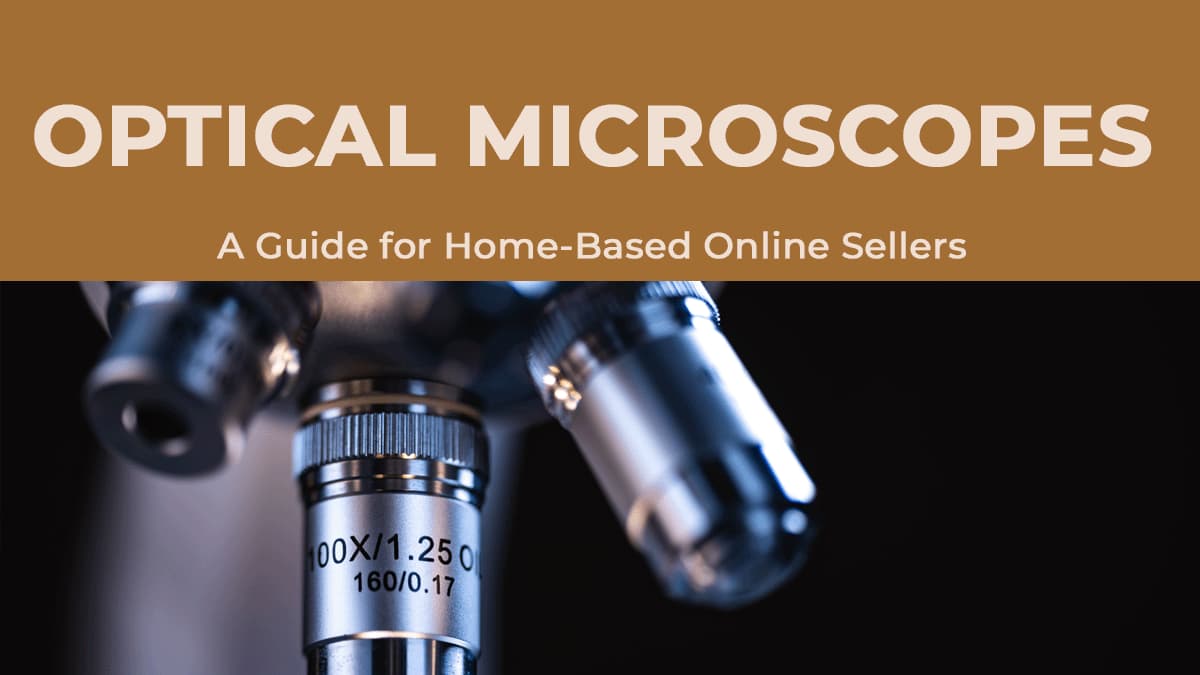For home-based online sellers, stocking optical microscopes is a strategic choice to tap into a niche with consistent demand. Available through WorldwideBrands.com, which connects you to 17 million products from verified wholesalers, these microscopes deliver precision for students, hobbyists, and professionals. Their versatility for educational, scientific, and recreational use makes them a compelling product line for sellers aiming to meet growing interest in hands-on learning and exploration.
Optical microscopes align with the surge in STEM education and at-home science activities, appealing to buyers who value tools for discovery. This product offers sellers a chance to build a business around a practical, high-value item that resonates with today’s focus on knowledge and curiosity. It’s a solid starting point for entering the ecommerce market with confidence.
Market Snapshot: The Rise of Optical Microscopes
The scientific equipment market in 2025 is thriving, valued at approximately $40 billion globally, with a 6% year-over-year growth rate in the United States, according to industry reports. Optical microscopes contribute significantly, driving a 12% sales increase in the microscopy category, fueled by rising interest in STEM education and citizen science. Online searches for optical microscopes have climbed 25% in 2025, particularly on platforms like Amazon and educational retailers like Carolina Biological Supply.
Retail data indicates optical microscopes rank in the top 15% of scientific tools sold online, signaling a stable and growing market. For home-based sellers, this trend offers a low-barrier opportunity to enter a dynamic niche. The blend of educational demand and hobbyist enthusiasm positions optical microscopes as a viable choice for ecommerce ventures.
Target Demographic: Who’s Buying Optical Microscopes?
The primary demographic for optical microscopes includes adults aged 25-45, often parents, educators, or hobbyists passionate about science and learning. These buyers prioritize quality and functionality, seeking microscopes for home education, amateur research, or personal projects, and are active on platforms like Instagram and YouTube, sharing science-related content. They’re willing to invest in reliable tools that support their educational or exploratory goals.
A secondary audience includes families aged 30-55, purchasing microscopes for children’s education or homeschooling needs. These buyers focus on affordability and durability, often shopping on Amazon or eBay for competitive prices and bundles. By targeting the primary group with STEM-focused marketing and the secondary group with budget-friendly promotions, sellers can broaden their reach across these distinct audiences.
Demand and Competition Analysis for Optical Microscopes
Demand for optical microscopes is strong, driven by steady growth in online search trends and sales data. Google Trends reports a 25% increase in searches for microscopy-related terms over the past 12 months, with peaks during back-to-school seasons (August-September) and holiday gifting periods (November-December). On Amazon, optical microscopes sell 400-800 units monthly during peak seasons, amplified by social media content under hashtags like #STEMEducation, which garner millions of views.
Competition varies by channel. Amazon and eBay list over 800 optical microscope products, priced between $50 and $150, but high fees (13-15% on eBay, 15% on Amazon) and crowded listings challenge new sellers’ visibility. Many listings lack distinctive branding, offering a chance to stand out with enhanced product images and detailed descriptions. Independent websites on platforms like Shopify or WooCommerce avoid marketplace fees, boosting margins by 10-15%, and allow unique branding through SEO-driven content, such as microscopy tutorials, though they require upfront marketing investment.
Profit Margin Potential of Optical Microscopes
Optical microscopes offer attractive profit margins for home-based sellers, especially when sourced via WorldwideBrands.com’s verified wholesalers. Wholesale costs average $30 per unit, with retail prices ranging from $80 to $120 across channels. On Amazon or eBay, this yields a gross margin of 62-75% before fees, shipping, and marketing, but after a 15% platform fee, net margins drop to 45-55%, or $36-66 per unit at a $100 retail price.
On an independent website, sellers retain the full 62-75% gross margin, minus minimal hosting and payment processing fees (3-5%). Selling at $100 yields a net profit of $59-71 per unit, compared to $36-66 on Amazon. Emphasizing educational value through targeted content can justify premium pricing, making websites a more profitable channel, though driving traffic requires strategic marketing efforts.
Year-Round Drawback of Selling Optical Microscopes
While optical microscopes have strong appeal, their sales fluctuate seasonally, posing challenges for year-round revenue. Sales peak during back-to-school (August-September) and holiday seasons (November-December), but drop by about 35% in slower months like February-April, per 2025 ecommerce data for educational products. This dip can lead to excess inventory, tying up capital for sellers who overstock.
To mitigate this, stock conservatively in off-peak months and shift marketing to highlight alternative uses, like hobbyist microscopy projects or gift ideas for science enthusiasts. On an independent website, content like “Beginner Microscopy Guides” can sustain year-round interest. Bundling microscopes with accessories, such as slide kits, during holidays can also boost winter sales, ensuring steadier cash flow.
Viability Verdict and Actionable Advice for Optical Microscopes
Optical microscopes are a viable product line for home-based online sellers, offering strong demand, manageable competition, and solid profit margins. Their alignment with STEM trends appeals to education-focused buyers, though seasonal sales dips require careful inventory planning. For new sellers, this product provides a promising entry into ecommerce, with opportunities to succeed on marketplaces or independent websites, provided you make informed decisions. Before launching, research sales channels thoroughly. On Amazon and eBay, verify a $80-$120 retail price is competitive by analyzing top listings, but account for high fees (13-15%) and competition impacting margins. Alternatively, a Shopify or WooCommerce website retains higher margins (62-75%) and allows branding through SEO content like microscopy blogs, despite requiring marketing effort. Join science and education communities on Instagram using hashtags like #ScienceAtHome to gauge audience interest. Source through WorldwideBrands.com for reliable wholesalers, ensuring a well-researched start to your online store.

